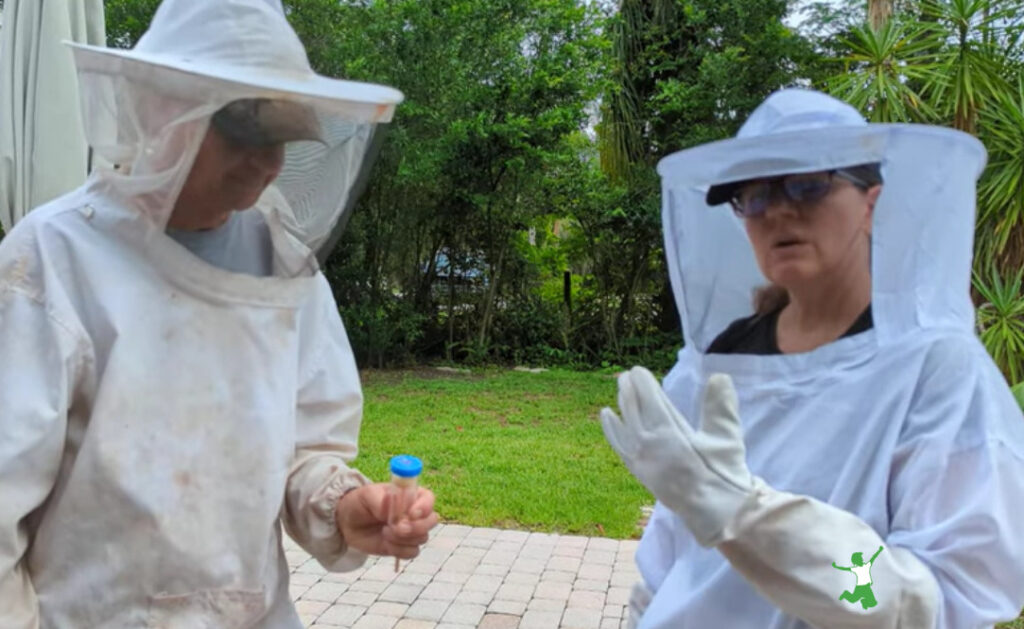How to safely mark a queen bee so that you know how old she is and to more easily identify her during periodic hive wellness checks.

My beehive adventure continues following the requeening of my beehive and the untimely retirement of her predecessor, Aurora.
It was time to mark the new queen, which I aptly named Scarlett. You will find out why below!
There are a couple of major benefits to taking the time to mark the queen of a bee colony, particularly for a new beekeeper like me still learning the ropes!
Marked Queens Are Easier to Find
First, marking the queen makes it much easier to find her during regular beehive checks.
When you remove a panel from your beehive to check for healthy levels of nectar, pollen and larva, finding the queen can be a challenge with literally thousands of bees moving around!
While the queen is larger than the worker bees and drones, marking her with a tiny dot on the dorsal side of her upper abdomen makes it a much easier process!
Color Indicates Queen Bee’s Age
Secondly, if you have multiple beehives (I intend to grow my colonies beyond just the one I have now), it is important to mark the queens so you know how old each one is.
Queen bees typically live for about 2-3 years.
Thus, the color of the queen’s marking makes it easy to figure out how old she is and what the timeframe might be for her continued productivity within the bee colony.
Which Color to Use? Queen Bee Color Marking Guide
For example, this year…2023…is a red year for queen bees. Hence, the name of my new queen…Scarlett!
This means that queens born during this year should be marked with a red dot.
It is very important to ONLY use nontoxic paint specially designed for bees for marking the queen.
Never ever use nail polish or a sharpie which would be poisonous to her.
Here is a brand of nontoxic bee pens to use that is harmless to her and the hive.
In addition to nontoxic queen marking pens, you will need a queen marking tool to safely contain her during the process.
In summary, the year a queen bee is born determines what color she is marked with.
- White: Queens born in years that end with 1 and 6 are marked with a white dot.
- Yellow: Queens born in years that end with 2 and 7 are marked with a yellow dot.
- Red: Queens born in years that end with 3 and 8 are marked with a red dot.
- Green: Queens born in years that end with 4 and 9 are marked with a green dot.
- Blue: Queens born in years that end in 0 and 5 are marked with a blue dot.
How to Mark the Queen Bee
Once you have your queen marking cage and nontoxic marking pens, you are ready to place a dot on your queen bee!
Below is a video of the three-step process that Beekeeper John of Gem Apiaries, taught me for safe and simple marking of the queen in my beehive.
- Gently capture the queen from a beehive frame in the queen marking tool.
- Slowly reduce the amount of space that the queen has to move around.
- Once the queen is accessible through the openings on the top of the marking tool, use the appropriate color of nontoxic bee pen to place a dot on her upper abdomen (dorsal side).
See the process unfold in the short video below!








Enjoyed learning about how to mark a queen bee. Very informative and detailed post. Thank you.